- Books Name
- Physics Book Part l and ll
- Publication
- Grow Career Publication
- Course
- CBSE Class 12
- Subject
- Physics
Chapter 5: Magnetism and Matter
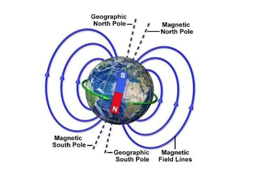
THE BAR MAGNET
A bar magnet is a rectangular piece of an object, made up of iron, steel or any other ferromagnetic substance or ferromagnetic composite, that shows permanent magnetic properties. It has two poles, a north and a south pole such that when suspended freely, the magnet aligns itself so that the northern pole points towards the magnetic north pole of the earth.
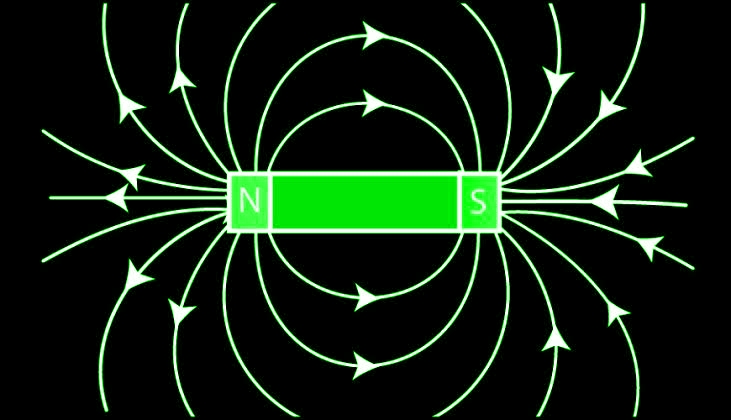
Types of Bar Magnet
There are two types of bar magnet:
- Cylindrical bar magnet: A cylindrical rod is also known as rod magnets that have a thickness equal to larger than the diameter enabling high magnetism property.
- Rectangular bar magnet: Rectangular bar magnets find applications in manufacturing and engineering industries as they have magnetic strength and field greater than the other magnets.
Bar magnet as an equivalent solenoid
A solenoid is a coil with a length greater than its diameter and is a type of electromagnet to produce controlled magnetic fields by passing an electric current through it.
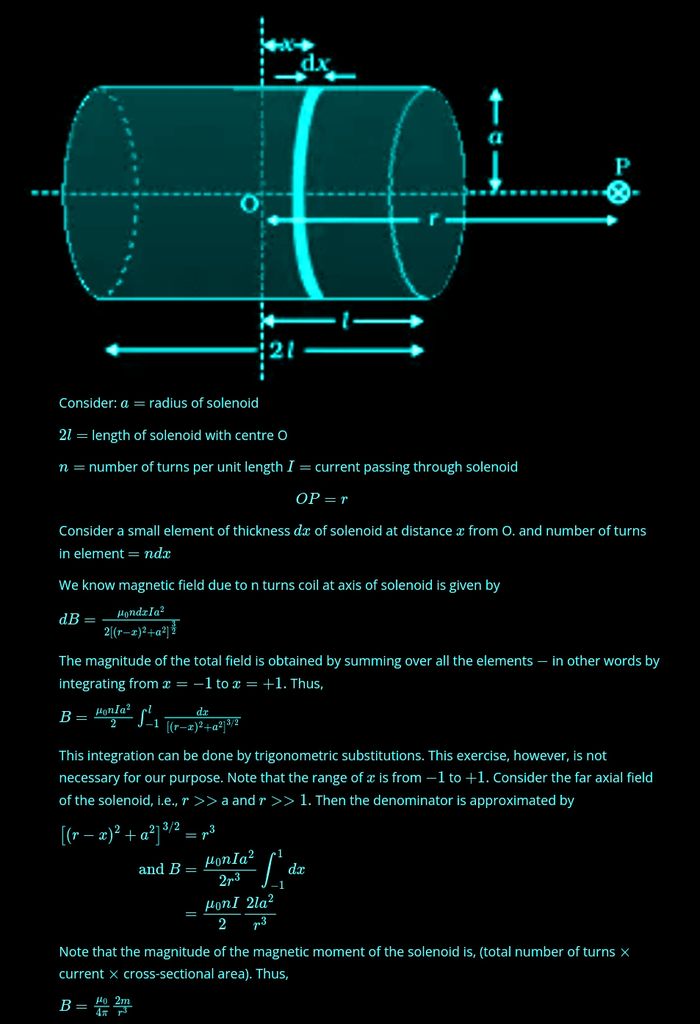
The dipole in a uniform magnetic field
Take a compass with known value of magnetic moment m and moment of Intertia I . Allow the needle to oscillate in a magnetic field of value B.
The torque on the needle is given by
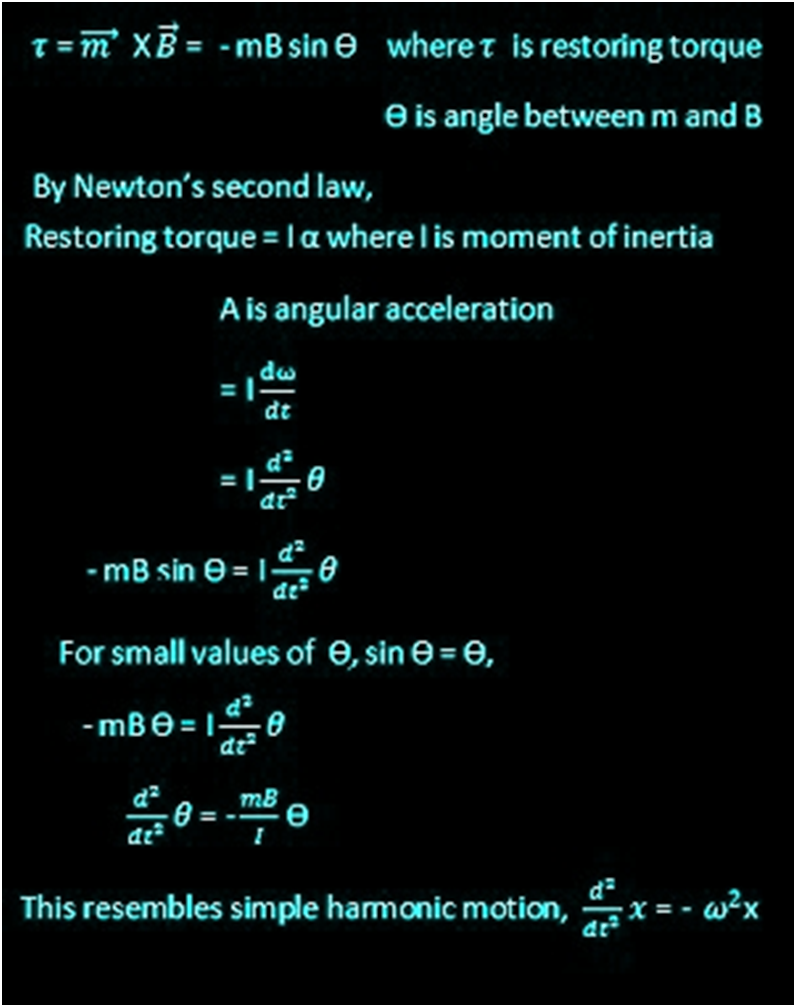
MAGNETISM AND GAUSS’S LAW
Gauss' Law for magnetism applies to the magnetic flux through a closed surface. In this case the area vector points out from the surface.
Because magnetic field lines are continuous loops, all closed surfaces have as many magnetic field lines going in as coming out. Hence, the net magnetic flux through a closed surface is zero.
Net flux = ∫ B • dA = 0
∫E⋅dA=Q/ε0
Where,
- E is the electric field vector
- Q is the enclosed electric charge
- ε0 is the electric permittivity of free space
- A is the outward pointing normal area vector
- Books Name
- Physics by Anshu Physics Book
- Publication
- Madhava Publications
- Course
- CBSE Class 12
- Subject
- Physics
Introduction
Magnetic phenomena are universal in nature. In the last chapter, we learned that moving charges or electric currents produce magnetic fields. In this chapter, we will take a look at magnetism as a subject on its own.
The word Magnet is derived from the name of an island in Greece called Magnesia where magnetic ores deposits were found. The directional properties of the magnets have been known since ancient times. A freely suspended magnet points itself in a north-south direction.
Magnetism
Some of the commonly known ideas regarding magnetism are:
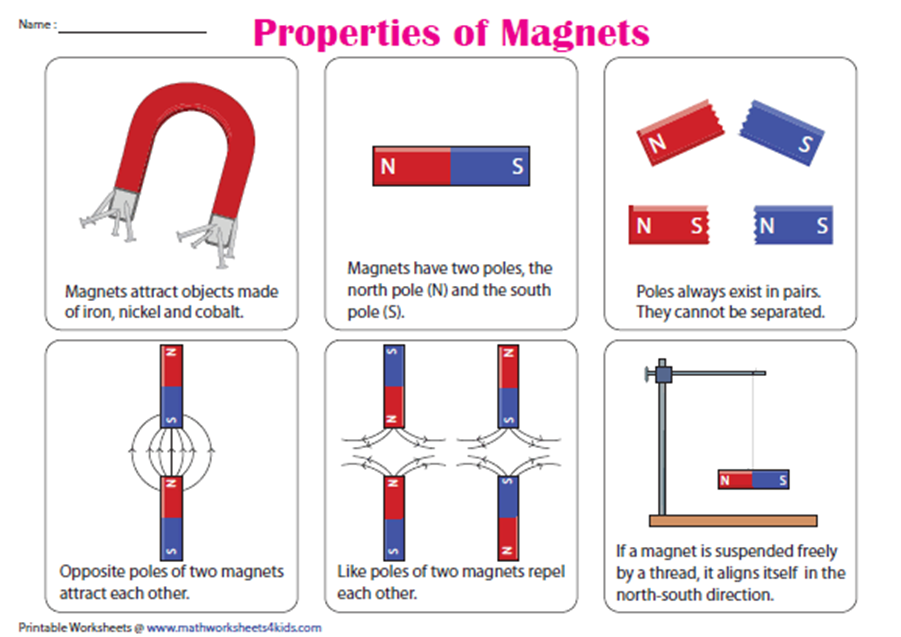
- The earth behaves like a magnet with the magnetic field pointing approximately from the geographical south to the north.
- Directive Property: When a bar magnet is freely suspended. It points in the north-south direction. The tip which points toward the geographical north is called the north pole of the bar magnet. And the tip which points toward the geographical south is called the south pole of the bar magnet.
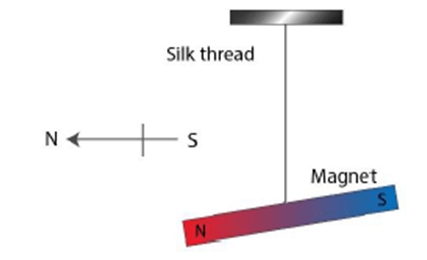
- Like poles of the magnet repel each other and unlike poles attract each other.
- Attractive property: A magnet attracts small pieces of iron, cobalt and nickel etc.
- Magnetic poles always exist in pairs: Magnetic monopoles do not exist. We cannot isolate the north or south pole of the magnet. If we try to isolate two poles by breaking the magnet in the middle, each broken part is found to be a magnet with N and S poles.
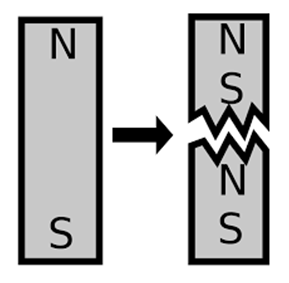
- Magnetic Induction: It is possible to make magnets out of iron and its alloys.
The Bar magnet
A bar magnet is a bar of circular or rectangular cross-section magnet.

Let’s first discuss some important definitions related to magnetism:
- Magnetic field: The space around the magnet within which its influence can be experienced is called the magnetic field.
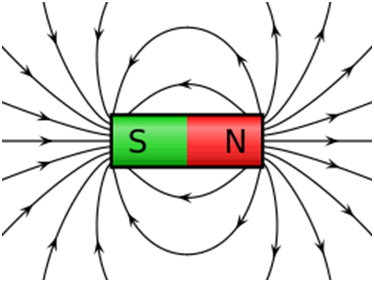
- Uniform magnetic field: A magnetic field in a region is said to be uniform if it has the same magnitude and direction at all points of that region.
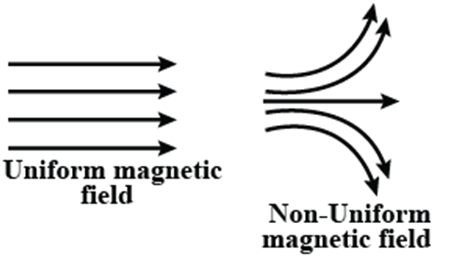
- Magnetic poles: There are regions of apparently concentrated magnetic strength in a magnet where the attraction is maximum.
- Magnetic axis: The line passing through the poles of a magnet is called the magnetic axis of the magnet.
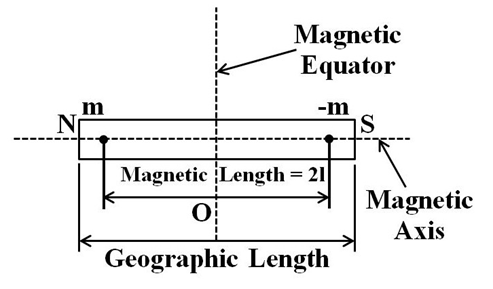
- Magnetic equator: The line passing through the center of the magnet and at right angles to the magnetic axis is called the magnetic equator of the magnet.
- Magnetic length: The distance between the two poles of a magnet is called the magnetic length of the magnet. It is slightly less than the geometrical length of the magnet.
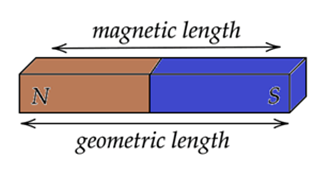
Magnetic dipole and magnetic dipole moment
In electrostatics, we had electric dipoles and electric dipole moments. In the same way in Magnetostatics we have magnetic dipoles and magnetic dipole moments.
An arrangement of two equal and opposite magnetic poles separated by a small distance is called a magnetic dipole.
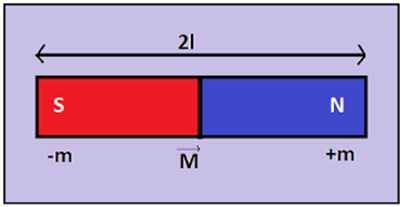
Every bar magnet is a magnetic dipole. A current-carrying loop behaves as a magnetic dipole. Even an atom acts as a magnetic dipole due to the circulatory motion of electrons around its nucleus.
Magnetic dipole moment: The magnetic dipole moment of a magnetic dipole is defined as the product of its pole strength and magnetic length. It is a vector quantity, directed from the south pole to the north pole.
Where m= pole strength.
2L is the length of a magnet.
M= magnetic dipole moment
Magnetic Field Lines
Michael Faraday introduces a hypothetical concept of magnetic field lines to represent a magnetic field visually.
Magnetic field lines may be defined as the curve the tangent to which at any point gives the direction of the magnetic field at that point.
Properties of magnetic field
- Magnetic lines of force are closed curves that start in the air from the N-pole to the S-pole and return to the N-pole through the interior of the magnet.
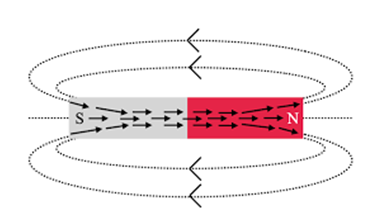
- The lines of forces never cross each other. If they do so, that would mean there are two directions of the magnetic field at that point of intersection which is impossible.
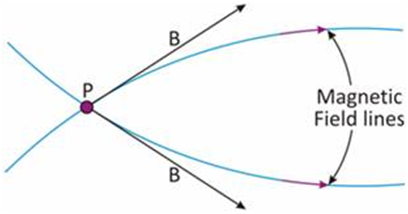
- The lines of forces have a tendency to contract lengthwise and expand sidewise. This explains attraction between unlike poles and repulsion between like poles.
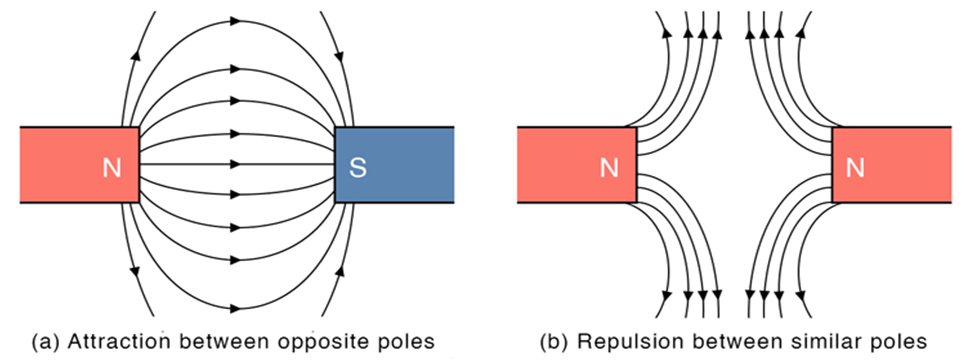
- The relative closeness of the lines of forces gives the measure of the strength of the magnetic field which is maximum at the poles.
Bar magnet as an equivalent solenoid
When a current is passed through a solenoid, it behaves like a bar magnet. Some observations of similar behavior are as follows :
- A current-carrying solenoid suspended freely always comes to rest in a north-south direction.
- Two current-carrying solenoids exhibit mutual attraction and repulsion when brought closer to one another.
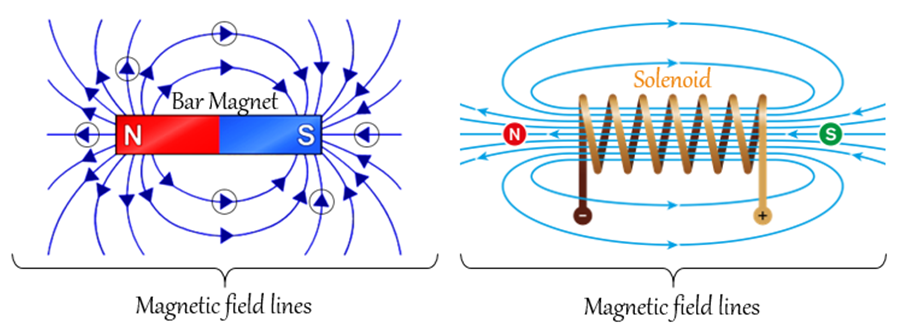
- The pattern of lines of forces of a bar magnet and current-carrying solenoid is exactly similar. Thus a bar magnet and current-carrying solenoid produce a similar magnetic field.
Gauss’s law in Magnetism
Gauss’s Law for magnetism is applied to the magnetic flux through a closed surface. In this case, the area vector points out from the surface. Because magnetic field lines are continuous loops, all closed surfaces have as many magnetic field lines going in as coming out and hence net magnetic flux through a closed surface is zero.
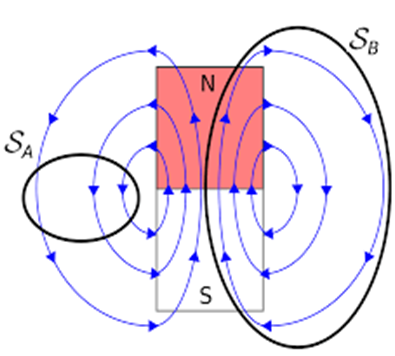
Gauss’s Law in magnetism states that the surface integral of a magnetic field over a closed surface is always zero. The net magnetic flux through a closed surface is zero.
Mathematically it is written in integral form as:
![]()
Differential form of Gauss’s law in Magnetism
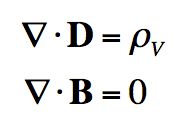
Consequences of Gauss’s Law :
- Gauss’s law indicated that there are no sources or the sink of the magnetic field inside a closed surface. Hence isolated magnetic poles called monopoles do not exist.
- The most elementary magnetic element is a magnetic dipole or a current loop. All magnetic phenomena can be explained in terms of an arrangement of magnetic dipoles or current loops.
- If a number of field lines enter a closed surface then an equal number of lines of forces must leave that surface.
The Earth’s Magnetism
Earth is a powerful natural magnet. Its magnetic field is present everywhere near the earth’s surface. The branch of physics that deals with the study of earth’s magnetism is called terrestrial magnetism or geomagnetism.
Evidence in support of earth’s magnetism:
- A freely suspended magnetic needle comes to rest roughly in a north-south direction. This suggests that the earth behaves as a large magnet with its south pole lying somewhere near the geographic north pole and its north pole lying somewhere near the geographical south pole.
- An iron bar buried in the earth becomes a weak magnet. Magnetism is induced by the earth’s magnetic field.
- Existence of neutral points near a bar magnet indicated the presence of the earth’s magnetic field.
Origin of the earth’s magnetism
If earth behaves like a natural magnet. The question will arise: what is the origin of earth’s magnetism?. Many scientists have given theories about the cause of the earth’s magnetism.
- William Gilbert suggested that magnetism is due to the presence of magnetic material at its center, which could be a permanent magnet.
- Prof Blackett suggests that the earth’s magnetism is due to the rotation of the earth about its own axis.
- Sir E. Bullard said that there are large deposits of ferromagnetic materials like iron, cobalt etc in the core of the earth in molten form. When the earth rotates about its axis, the circulating ions in the highly conducting liquid region of the earth’s core form current loops and hence produce a magnetic field.
Some terms related to earth’s magnetism
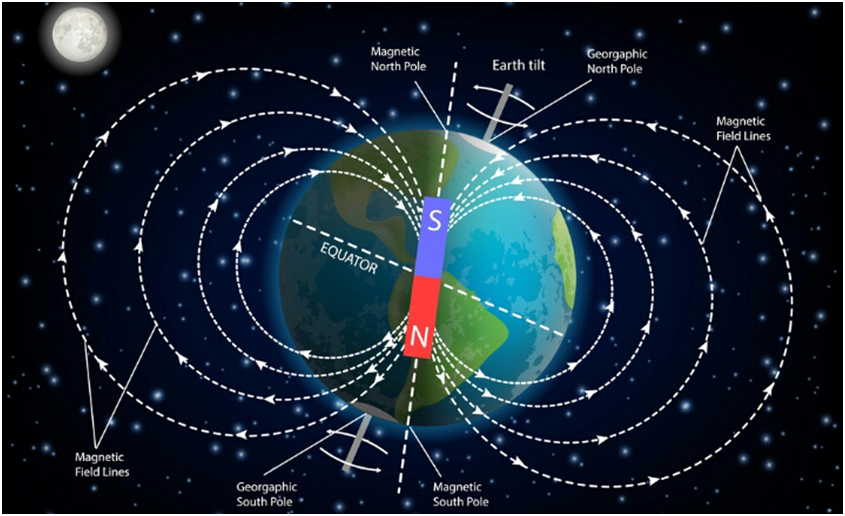
Geographica axis: The straight line passing through the geographical north and south directions of the earth. It is the axis of rotation of the earth.
Magnetic axis: The straight line passing through the magnetic north and south poles of the earth is called its magnetic axis.
Magnetic equator: It is the great circle on the earth perpendicular to the magnetic axis.
Magnetic meridian: The vertical plane passing through the magnetic axis of a freely suspended small magnet. The earth’s magnetic field acts in the direction of the magnetic meridian.
Geographical meridian: The vertical plane passing through the geographical north and south pole.
Element of Earth’s magnetic field
The earth’s magnetic field at any point can be explained completely by three parameters which are called elements of earth’s magnetism. These elements are Magnetic declination, magnetic inclination and the horizontal component of the earth’s magnetic field.
- Magnetic declination: The angle between the geographical meridian and the magnetic meridian at a place is called the magnetic declination (α) at that point.
It arises because the magnetic axis of the earth does not coincide with the geographical axis.

- Magnetic inclination or angle of dip: The angle made by the earth’s total magnetic field B with the horizontal direction in the magnetic meridian is called the angle of dip (δ) at any place.
The angle of dip is different at different places on earth. It is zero at the magnetic equator and 90 degrees at the poles. At all other places, it varies between 0 to 90.
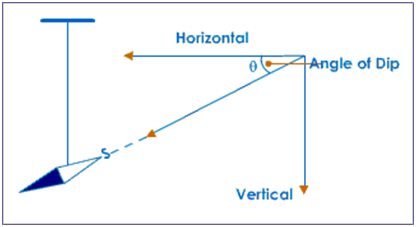
- Horizontal component of the earth’s magnetic field. It is the component of the earth’s total magnetic field B in the horizontal direction in the magnetic meridian.
It is given by the formula

 Grow Career Publication
Grow Career Publication
 Madhava Publications
Madhava Publications
